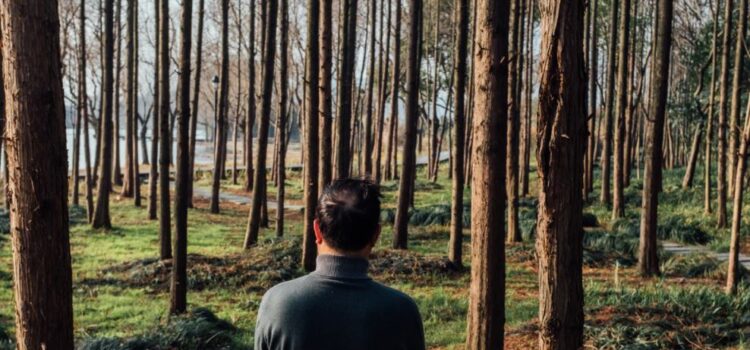

This article is an excerpt from the Shortform book guide to "Radical Acceptance" by Tara Brach. Shortform has the world's best summaries and analyses of books you should be reading.
Like this article? Sign up for a free trial here .
What is the Sacred Pause? What does pausing have to do with Radical Acceptance and Buddhism?
In order to be fully present, we have to pause. The old folk story about the man who kept running from his shadow is the perfect example of this. He could never put even the smallest distance between himself and his shadow but if he’d just paused to sit in the shade, it would’ve disappeared.
Keep reading to learn more about Radical Acceptance and the Sacred Pause.
The Power of the Sacred Pause
Radical Acceptance requires that we be fully present, aware of what’s happening to us and within us. In order to do that we have to have the sacred pause— to momentarily stop our efforts to control the world and ourselves.
Oftentimes, we simply react to problems as they arise. However, when we just react, we’re often responding from a place of negative emotion such as fear, anger, or frustration. Stopping for just a few seconds to observe and identify your current experience can help you respond to it with wisdom and clarity.
The Essential Pause
For example, if we’re about to eat a piece of chocolate, we should first take a moment to recognize the anticipation we feel, and perhaps the underlying guilt or judgment. We might then decide to eat it anyway—fully present and able to enjoy the experience—or we might put it back and go for a jog instead. The point of a pause is that we don’t know what will happen next; it leaves us open to the entire world of possibility.
Tom Wolfe, in his book The Right Stuff, describes an experiment the U.S. Air Force ran in the 1950s, sending pilots to fly higher than any pilot ever had before. They found that, once they broke free of the denser part of the atmosphere, they totally lost control of their planes. The harder they tried to correct their path, the more wildly they spun out of control. Several pilots tragically died.
They only found the solution by accident, when a pilot named Chuck Yeager was knocked out by the violent spinning. He came to after his plane had reentered the denser air, where normal flying techniques would work correctly. As it turned out, the only way out of that desperate situation was doing nothing. In other words, pausing—letting events play out until he could take control again.
Probably—hopefully—very few of us will ever find ourselves in an out-of-control fighter jet. However, many of us will find ourselves in situations where we feel similarly helpless, and yet desperate to regain control. Perhaps we’ve made a mistake at work, and are scrambling to hide it or make up for it. Maybe we’re angry because someone hurt us, or someone we care about. These are the times when taking the pause is both hardest and most necessary.
Don’t Run Away
There’s an old folk story about a man who was so afraid of his own shadow that he tried to run away from it. However, no matter how far or how fast he ran, he could never put even the smallest distance between himself and his shadow. Eventually the man ran himself to death—but if he’d just taken a moment to sit in the shade and rest, his shadow would have disappeared.
Each of us has our own shadow. It’s those parts of us that we don’t accept, and that we try to hide from others. It’s born from the conflict between who we are inside and who our society and culture tells us we’re supposed to be.
Your shadow is created from the thoughts and feelings that you repress in order to avoid rejection from others (or yourself), and rooted in the underlying feeling that you’re somehow defective. For example, if you tell yourself that you shouldn’t be angry about something, you’re not just telling yourself that it’s wrong to be angry—you’re telling yourself that there’s something wrong with you because you’re angry.
Like the man trying to run from his physical shadow, many of us spend our lives running from our emotional shadows. We protect our vulnerabilities by falling into old defensive patterns—lashing out, running away, or hiding from the pain. Every time we react instinctively, instead of pausing and then facing our shadows with Radical Acceptance, we only make the shadow stronger.
As the famous psychiatrist Carl Jung once said, the parts of our psyche that we don’t face are the ultimate source of neurosis and suffering. In order to escape the shadow, we have to face it. We must accept that what we’re hiding from may be painful or frightening, but that it’ll never fix itself until we stop running and pause.

———End of Preview———
Like what you just read? Read the rest of the world's best book summary and analysis of Tara Brach's "Radical Acceptance" at Shortform .
Here's what you'll find in our full Radical Acceptance summary :
- How to live your life fully experiencing everything
- Why you need to let go of judging yourself or your experiences
- How you can acknowledge and welcome any experience






